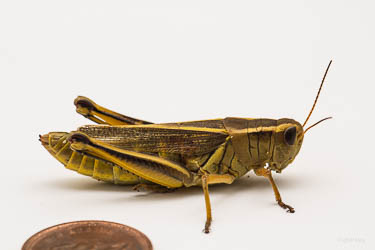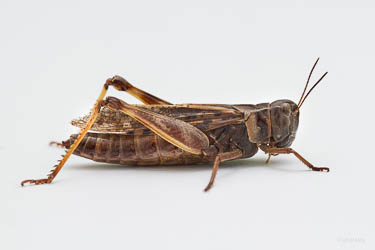| |
2016 Grasshopper Forecast | |
| |
|
|
| |
|
|
| |
 |  |
| The risk of economically significant grasshopper populations in 2016 has increased in northern central Alberta and the Peace region.
In some cases the populations in 2015 were very severe. Southern parts of central Alberta is highly variable with several areas that could cause problems in 2016.
The grasshopper risk had been increasing in southern Alberta for the last few years and although populations in southern Alberta are generally lower several areas remain with significant risk, notably in Fourty Mile (and parts of Cypress) and Willow Creek (and western Lethbridge) counties but the overall population in southern Alberta could translate into grasshopper problems if conditions are favorable in the spring.
Areas indicated with moderate to severe risk could experience problems with grasshoppers if environmental conditions favor the hatching and development of grasshoppers in late May through June. Localized factors such as light soils or south facing slopes result in an elevated risk of grasshopper infestations. Conditions in late spring 2016 will determine the extent of the grasshopper problems later this growing season. Infestation levels in individual fields are NOT indicated in this 2016 Grasshopper Forecast Map. | |
The 2016 grasshopper forecast map is based on adult grasshoppers counts conducted in early August of 2015 by participating Agriculture Fieldmen across the province. These adult counts give an indication of the number of adults at the end of the season that are capable of reproduction and egg laying. Environmental factors can result in higher or lower actual populations than forecast. Individual producers need to be aware of the potential risks in their area and monitor fields in order to be prepared to make the appropriate decisions to implement control measures.

Two stripe grasshopper
Shelley Barkley, Alberta Agriculture and Forestry |

Clearwing grasshopper
Shelley Barkley, Alberta Agriculture and Forestry |
On individual farms, particular attention should be paid to areas that traditionally have higher grasshopper populations. In addition, grasshoppers tend to lay their eggs near areas of green growth in the fall that will provide potential food sources for emerging young the following spring. Areas with early green plant growth such as field margins, fence-lines and roadsides are also areas that will give early indications of potential grasshopper problems.
If insecticides are needed, note label precautions regarding user safety, proper application techniques and instructions to reduce impacts on non-target organisms. It is important to remember that control measures are intended to protect the crops from economic damage and are never successful in totally eliminating grasshopper populations.
Alberta Agriculture and Forestry acknowledges the commitment and support of the Agriculture Fieldmen across the province in conducting the surveys essential to the creation of this forecast. This survey was coordinated by David Brennan of Alberta Agriculture and Forestry. The data management for this survey was done by Jan Lepp of Alberta Agriculture and Forestry.
Printable version of the grasshopper map.
Economic threshold information for grasshoppers.
Frequently Asked Questions
Grasshoppers: Lifecycle, Damage Assessment and Management Strategy
Thank you David Giffen, Agriculture and Agri-Food Canada, Saskatoon for building the map.
Historic Grasshopper Maps from 2007 to 2015. |
|
| |
|
|
| |
For more information about the content of this document, contact Scott Meers.
This document is maintained by Shelley Barkley.
This information published to the web on January 15, 2016.
Last Reviewed/Revised on February 5, 2018.
|
|